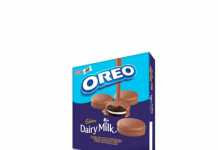A new generation of celebrities are teaching brands a great deal about how to generate content consumers engage with. It’s not enough to simply upload a product shot and expect this to somehow woo the Instagram world, you need to create a visual world or tap into a cultural moment and tell a story about what sits within that photographic frame or behind the filter. Kantar Added Value marketing manager, Annabel Porter, lists five ways brands could win on Instagram.
The rise of the insta-star has spawned a whole new industry of pay-to-say and endorsement deals.
Items featured on popular accounts like Top Girl Studio, Song of Style and Who What Wear, sell out within minutes and these new insta-lebrities have become tabloid fodder in their own right as well as scoring invitations to the hottest social events on the calendar.
These often seemingly instant moments posted by the likes of fashion blogger Chiara Ferragni belie the fact that behind the lens is a professional camera crew, stylist and lucrative sponsorship deals, not to mention airbrushing. Brands are naïve to think they can just put up a simple product shot and see that item fly off their virtual shelves.
However, this new generation of celebrities can teach health and wellness brands a great deal about how to generate content consumers engage with – it’s not enough to simply upload a product shot and expect this to somehow woo the Instagram world – you need to create a visual world or tap into a cultural moment and tell a story about what sits within that photographic frame or behind the filter.

• Be purposeful – One of the most powerful ways a brand can encourage its customers to share their content or use their hashtag, is to embrace a purpose that elevates them above simply being an item/service bought to meet a need. Typical brands embracing a purpose include Lululemon & Nike but elsewhere in the fitness space we see cult spinning gym Soul Cycle inspiring its followers to rise together, spread the soul, and generally forge friendships and love for your fellow fitness fanatic through passion for this intense cardiac activity. With nary a bike in sight. With hundreds of thousands of uses of #soulcycle they have definitely tapped into an emotion with users sharing inspirational quotes, images of their post workout fuel and New Year’s resolutions. Again, not a single bike in the frame.
• Embrace a broad sphere of influence
By sharing content that takes its cue from outside the boundary of their category, or from important cultural moments and trends, health and wellness brands can ensure a wider reach of their visual content. Lush is a perfect example of this – their products show up not just alongside other beauty and bath products but in psychedelia, market fresh images (due to their grocer like in store merchandising) as well as being tagged with anti-animal testing messages.
• Create vignettes
Savvy retailers are using in store displays and windows to not just showcase their product but to create beautiful photographic opportunities, often with hashtags already provided, making sure the display fits perfectly within a square. Last year in the wellness space millions of images of avocadoes and smoothie bowls were uploaded and brands jumped on this b(r)andwagon with slogan tees and their own versions of these clean-eating icons. You get the sense some cafes or restaurants have designed their menus to be photographed. Is a rainbow bagel tastier than a regular one – no? But it looks a whole lot better on social media.
• Use props
In an Added Value report on social watching and travel trends, we identified the use of tropical and inflatable props as the way to make sure your brand was shared on social media. The instawall concept is another way brands and retailers can create moments in their physical space which people want to engage with, We’ve seen these highly photogenic backdrops popping up in hotels and restaurants too, an idea health and wellness brands can also embrace.
• Regram & recognise
People share on Instagram so their content is seen, and smart brands give a shout out to those people instagramming their product or experience. Even better, ask them if they would mind if you shared their image too. The advocacy created from easy actions like this shouldn’t be underestimated. Brands can also make health aspirational for users, encouraging them to create and share their healthy experiences on social properties.
























































































